Soviet artist Ekaterina Sergeevna Zernova 1900-1995

Collective farmers welcome tankmen during maneuvers. 1937. Soviet artist Ekaterina Sergeevna Zernova (19 April 1900-1995)
Soviet artist Ekaterina Sergeevna Zernova
Born 19 April 1900, Ekaterina Sergeevna Zernova (Simferopol) – Member of the Moscow Union of Soviet Artists (1932), book illustrator, poster and monumental artist. Daughter of the curator of the Natural History Museum of the Tavrichesky provincial zemstvo. When she was 14 years old, the family moved to Moscow. There she studied in private studio of F.Rerberg (1915-1918). Later, she studied at the State Free Art Studios – Vhutemas (1919-1924). First, it was the workshop of I. Mashkov, and then A. Shevchenko and D. Shterenberg. Meanwhile, alongside with artistic education she studied at the Physics and Mathematics Faculty of Moscow University (1917-1924).
She joined the artistic group OST and in 1925 presented her works at the first exhibition. In the late 1920’s, within the framework of this society she conducted active public work. In particular, she decorated clubs, created wall newspapers, and cartoons. Also, illustrated several books, including children’s books, for the publishing houses “Mediator”, and “Gosizdat”. Engaged in a poster, she led agitation work to combat illiteracy, and even designed the “Poster alphabet.”
Meanwhile, the painter worked in the genre of landscape, still life, and a portrait. Since the late 1920’s she began to participate in international art exhibitions. In particular, in 1929-1933 exhibited her works at the exhibitions of the All-Union Society for Cultural Relations with Foreign Countries (VOKS).
After the split of the OST in 1931, she moved to Izobrigada (art brigade), a society of “production subjects” in painting. In 1936 in Moscow was the first solo exhibition of the artist. She painted canvases for defense, production and historical-revolutionary themes. In addition, participated in creating panels for the Soviet pavilion at the World Exhibition in New York (1939), and in the pavilion of the Far East at the All-Union Agricultural Exhibition (1939).

Ekaterina Zernova with her daughter. 1988
During the Great Patriotic War, she was sent by the Military Sanitary Museum to the front. There she made sketches in hospitals, medical battalions, and operating rooms (1943-1944) on the 1 st Baltic front. After the war she created a cycle of landscapes destroyed by the war of Sevastopol. Besides, created canvases dedicated to the heroism of the sailors of the Black Sea Fleet, thematic and historical paintings.
After the war, in 1945-1953 she taught at the Moscow Institute of Applied and Decorative Arts, and at the Moscow Textile Institute (1953-1971).
Invited to draw picturesque and mosaic panels (late 1950’s), from that time she began to work as a monumental artist. Her panels decorated an exhibition hall in Yalta on the embankment; a chemical cabinet in Salavat, and the Institute of Oceanology and the Museum of Anthropology in Moscow.
Meanwhile, in the 1960s, she often appealed to lyrical painting and performed a series of “Wonders of the Zoo”. According to her, the illustrations are full of “emotional attitudes towards animals”.
Honored Artist of the RSFSR (1974), Ekaterina Zernova is the author of the books “The future artist about the art of painting. (Notes of the teacher)” (1976), “Memoirs of the monumentalist” (1985), and numerous articles in periodicals.
Ekaterina Sergeevna died in 1995 (Moscow). Her works are in the State Tretyakov Gallery, the Museum of Contemporary History of Russia (Moscow), the Astrakhan Picture Gallery of Kustodiev, and the Karakalpakstan Museum of Art. Besides, in Nukus art museum (Uzbekistan), the National Museum in Warsaw (Poland), as well as in private collections of R.Johnson and M.Bone.
Soviet artist Ekaterina Sergeevna Zernova

Ski competition. 1932

Archer
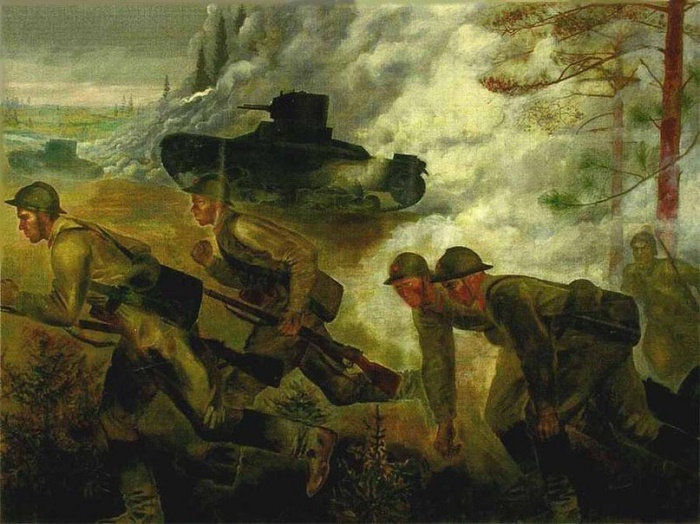
Attacking tanks. 1933

Book – memory of humanity. Mosaics of smalta in the Library

Bread and flowers. 1986

Chemistry
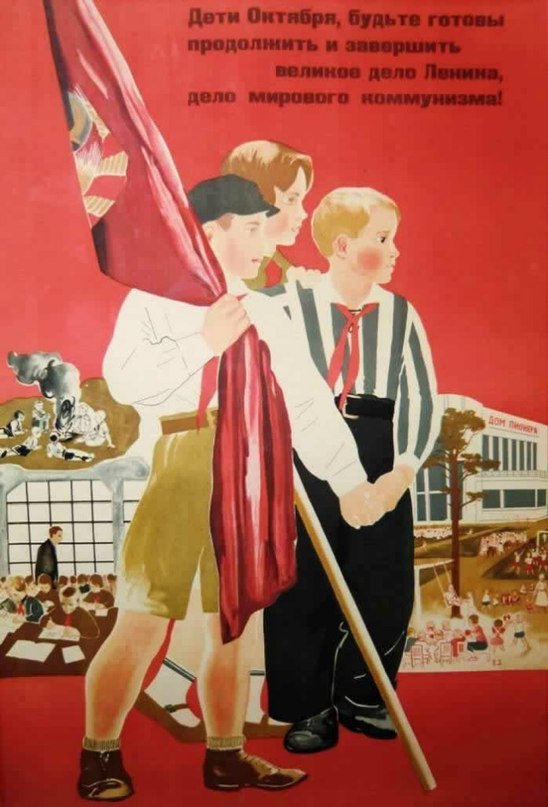
Children of October, be ready to continue and complete the great cause of Lenin, the cause of world communism. 1933

Children skiing. Poster. 1934

Down with the imperialist war. 1929

During reading (the daughter of the artist, V. V. Zernova, later – scientist-oceanologist). 1946
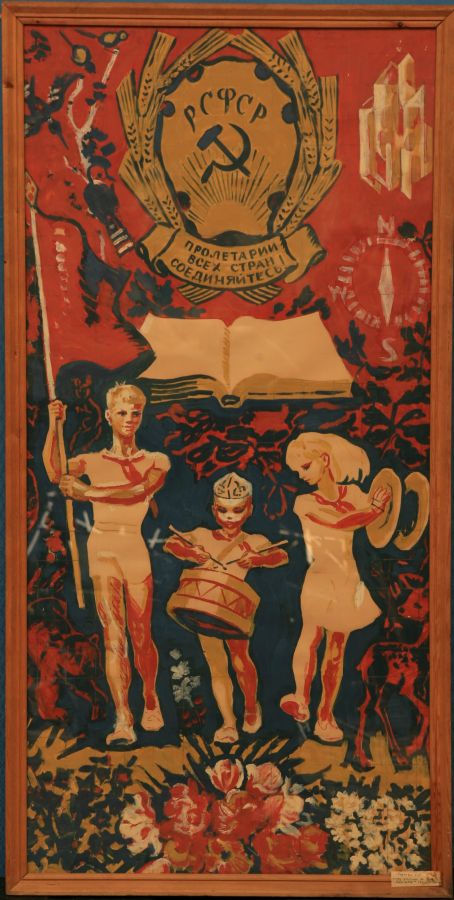
Sketch of the stele painting for a summer camp in the town of Bugulma. 1970

Examination. Sketch. 1955

Fish canning factory

Flowers and jug. 1984

Granny and granddaughter. 1943
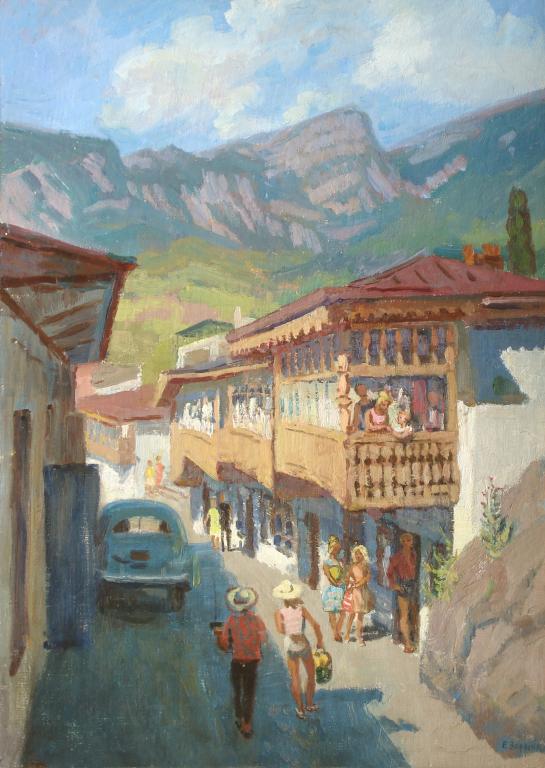
Gurzuf. 1965

Kremlin

Lake Borovoye. 1943

Landscape with Lake Borovoye. 1943

Long live May 1. 1932

Meeting. 1938

Moscow, sketch

On the mast of the research vessel (1956)

Peace. Children and birds, sketch

Pioneers, strengthen the defense of the country of the Soviets

Portrait of V.V. Zernova. 1969. Oil on canvas. Moscow museum of modern history

Poster to the theatrical play. 1958

Salvation of the banner. 1945

Science

Self-portrait

Sketch for painting

Sketch for the painting ‘Lenin and fine art’. 1977

Sketch of mosaics in Exhibition hall in Yalta, Crimea

Soldier pulling a canon. Study for the painting ‘Leo Tolstoy at the Fourth Bastion. 1953 Oil on cardboard

Still life with fruit and vegetables

The giant of agricultural engineering. 1931

The transfer of tanks Tempera. 1931
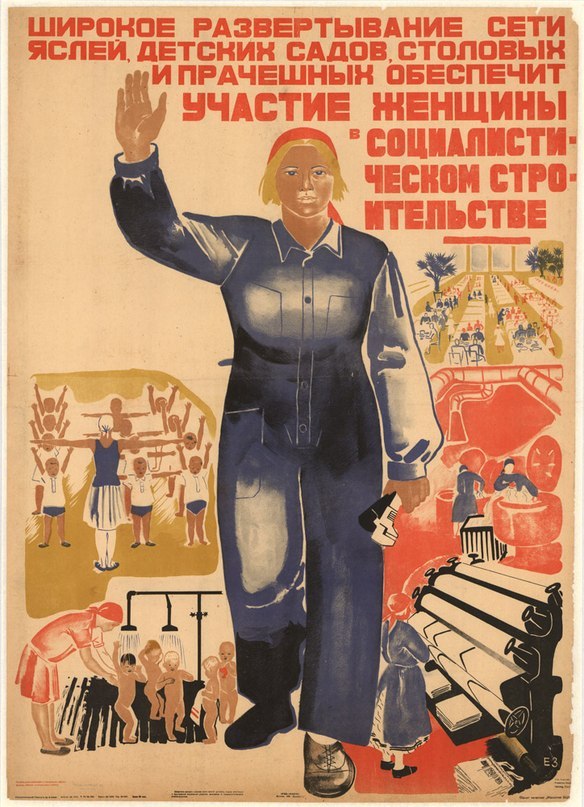
The wide deployment of a network of nurseries, kindergartens, canteens and laundries will ensure the participation of women in socialist construction, 1931

The worker at the machine tool. 1959

Three village women

Two bouquets of hydrangeas. 1984

We will be Leninists. 1934
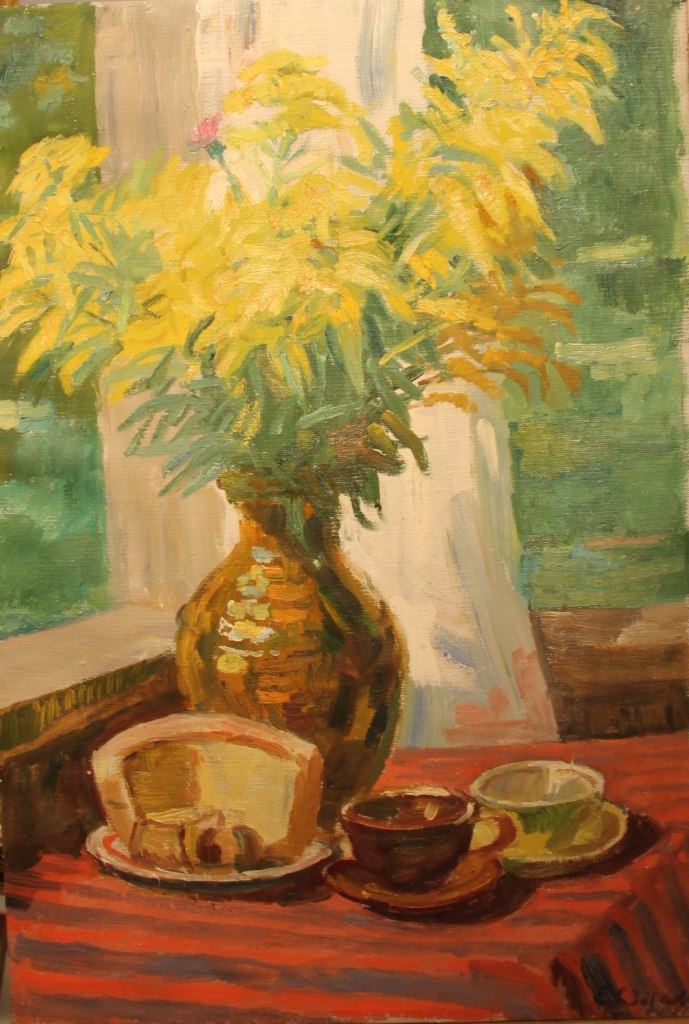
Yellow bouquet. 1976

Young pioneers and schoolchildren, Grow up literate and energetic builders of socialism. Strengthen discipline in school, master the basics of science. 1935






